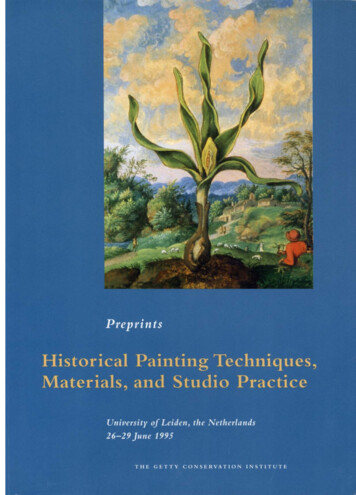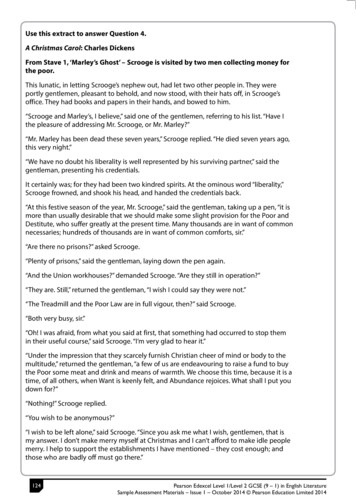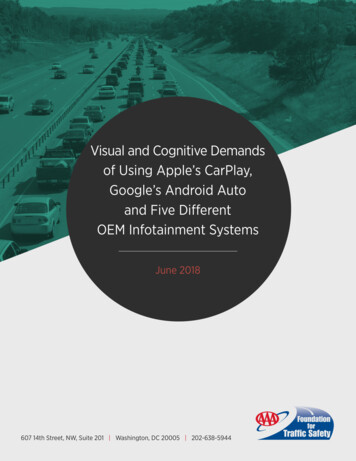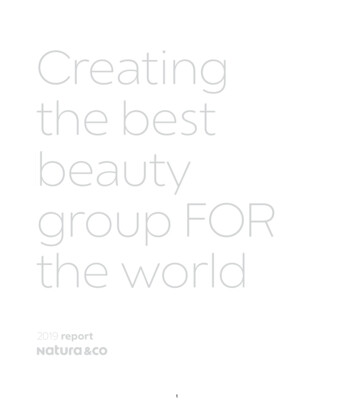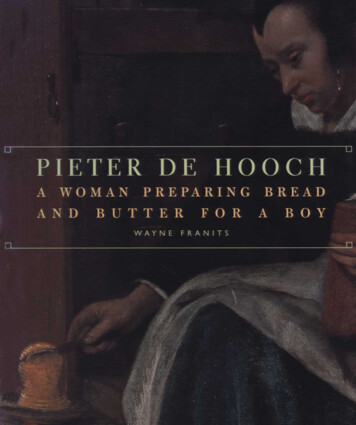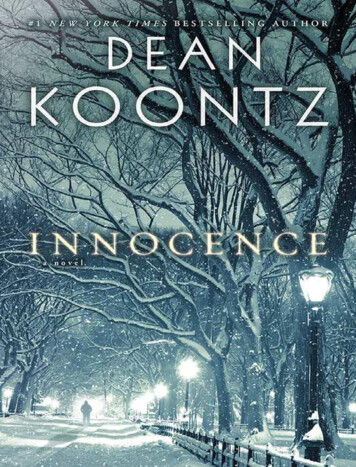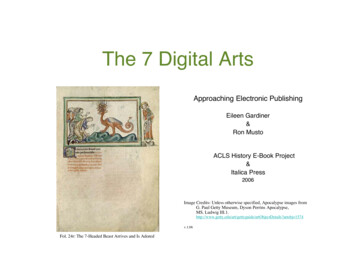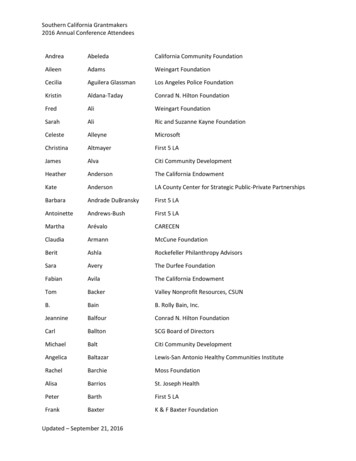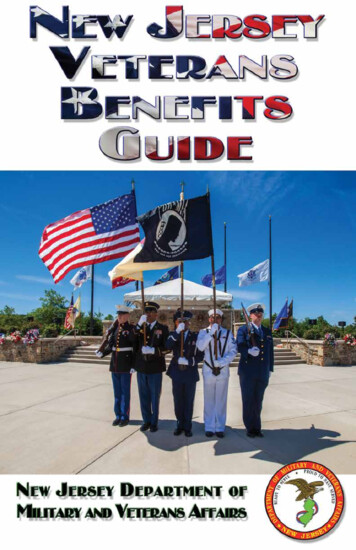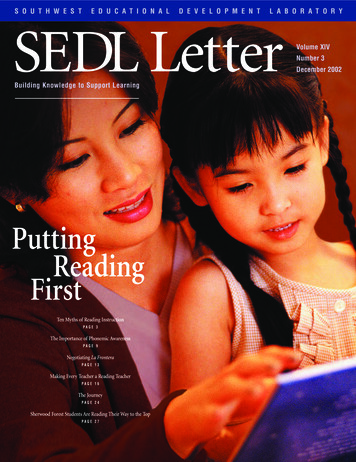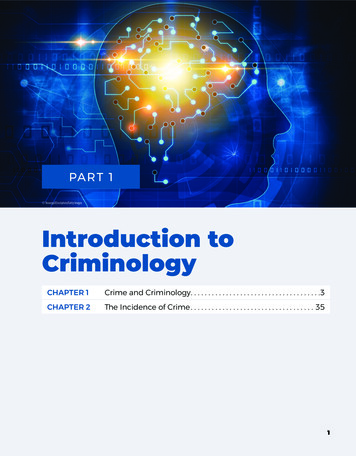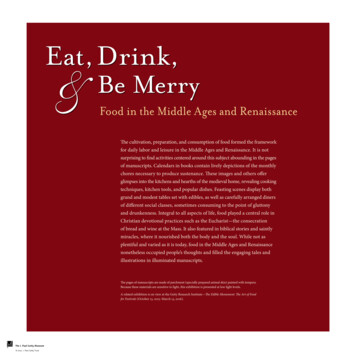
Transcription
Eat, Drink,&Be MerryFood in the Middle Ages and RenaissanceThe cultivation, preparation, and consumption of food formed the frameworkfor daily labor and leisure in the Middle Ages and Renaissance. It is notsurprising to find activities centered around this subject abounding in the pagesof manuscripts. Calendars in books contain lively depictions of the monthlychores necessary to produce sustenance. These images and others offerglimpses into the kitchens and hearths of the medieval home, revealing cookingtechniques, kitchen tools, and popular dishes. Feasting scenes display bothgrand and modest tables set with edibles, as well as carefully arranged dinersof different social classes, sometimes consuming to the point of gluttonyand drunkenness. Integral to all aspects of life, food played a central role inChristian devotional practices such as the Eucharist—the consecrationof bread and wine at the Mass. It also featured in biblical stories and saintlymiracles, where it nourished both the body and the soul. While not asplentiful and varied as it is today, food in the Middle Ages and Renaissancenonetheless occupied people’s thoughts and filled the engaging tales andillustrations in illuminated manuscripts.The pages of manuscripts are made of parchment (specially prepared animal skin) painted with tempera.Because these materials are sensitive to light, this exhibition is presented at low light levels.A related exhibition is on view at the Getty Research Institute—The Edible Monument: The Art of Foodfor Festivals (October 13, 2015–March 13, 2016).The J. Paul Getty Museum 2014 J. Paul Getty Trust
Nature’s YearlyBanquetMany medieval manuscripts used in Christian liturgy andprayer begin with a calendar listing the holy days celebratedthroughout the year. The images in these calendars oftendepict terrestrial and astrological time. Earthly time isrepresented by scenes commonly known as the labors ofthe months—the agricultural tasks, animal husbandry,and other daily activities corresponding to each month.These labors vary slightly depending on when and wherethe manuscript was made. Most of the calendar scenesshown here revolve around wheat—the foundation of themedieval European diet.For more information on calendars, see the video nearby.Nature’s YearlyBanquetMany medieval manuscripts used in Christian liturgy andprayer begin with a calendar listing the holy days celebratedthroughout the year. The images in these calendars oftendepict terrestrial and astrological time. Earthly time isrepresented by scenes commonly known as the labors ofthe months—the agricultural tasks, animal husbandry,and other daily activities corresponding to each month.These labors vary slightly depending on when and wherethe manuscript was made. Most of the calendar scenesshown here revolve around wheat—the foundation of themedieval European diet.For more information on calendars, see the video nearby.The J. Paul Getty Museum 2014 J. Paul Getty Trust
Preparation andConsumptionAfter the harvest and the hunt, raw foods were preparedfor consumption and then shared at meals and banquets,both simple and lavish. Most meals in the images shownhere appear modest and spare, but contemporary accountsreveal that medieval feasts often involved spectacle andthe theatrical presentation of dishes. For example, courtartists could be called upon to add final visual flourishes—such as gilding on edibles—that would have impressed andamazed guests. Some illustrated texts outline ideas aboutthe curative powers of particular foods and issue warningsagainst those that could cause gastric distress or imbalanceto the bodily humors. Other manuscripts emphasizethe morals surrounding eating, especially the perils ofconsuming to excess and the depravity of the glutton.Preparation andConsumptionAfter the harvest and the hunt, raw foods were preparedfor consumption and then shared at meals and banquets,both simple and lavish. Most meals in the images shownhere appear modest and spare, but contemporary accountsreveal that medieval feasts often involved spectacle andthe theatrical presentation of dishes. For example, courtartists could be called upon to add final visual flourishes—such as gilding on edibles—that would have impressed andamazed guests. Some illustrated texts outline ideas aboutthe curative powers of particular foods and issue warningsagainst those that could cause gastric distress or imbalanceto the bodily humors. Other manuscripts emphasizethe morals surrounding eating, especially the perils ofconsuming to excess and the depravity of the glutton.The J. Paul Getty Museum 2014 J. Paul Getty Trust
Food for theSoulFood not only structured daily life in the Middle Agesand Renaissance but also underpinned numerous storiesrecorded in Hebrew and Christian writings. Eating anddrinking are mentioned often—in the origins of humanitywith Adam and Eve, in the miracles performed by Christand the saints, and in the religious practices of medievalChristians, both lay and monastic. The sustenance citedor depicted in illuminated accounts is typically limited tobread, fish, and wine, reflecting the simple diet of biblicaltimes as well as Christian fasting, modesty, and piety. Thetexts and images present food as spiritual nourishment,inviting readers and viewers to consider the deeper meaningof what they harvested, prepared, and consumed.Food for theSoulFood not only structured daily life in the Middle Agesand Renaissance but also underpinned numerous storiesrecorded in Hebrew and Christian writings. Eating anddrinking are mentioned often—in the origins of humanitywith Adam and Eve, in the miracles performed by Christand the saints, and in the religious practices of medievalChristians, both lay and monastic. The sustenance citedor depicted in illuminated accounts is typically limited tobread, fish, and wine, reflecting the simple diet of biblicaltimes as well as Christian fasting, modesty, and piety. Thetexts and images present food as spiritual nourishment,inviting readers and viewers to consider the deeper meaningof what they harvested, prepared, and consumed.The J. Paul Getty Museum 2014 J. Paul Getty Trust
This material was published in 2015 to coincide with the J. Paul GettyMuseum exhibition Eat, Drink, and Be Merry: Food in the Middle Agesand Renaissance, October 13, 2015–January 3, 2016, at the Getty Center.To cite this essay we suggest using:Eat, Drink, and Be Merry: Food in the Middle Ages and Renaissance,published online 2015, The J. Paul Getty Museum, Los Angeles,http://www.getty.edu/art/ exhibitions/eat drinkThe J. Paul Getty Museum 2014 J. Paul Getty Trust
This material was published in 2015 to coincide with the J. Paul Getty Museum exhibition Eat, Drink, and Be Merry: Food in the Middle Ages and Renaissance, October 13, 2015–January 3, 2016, at the Getty Center. To cite this essay we suggest using: Eat, Drink, and Be Merry:
